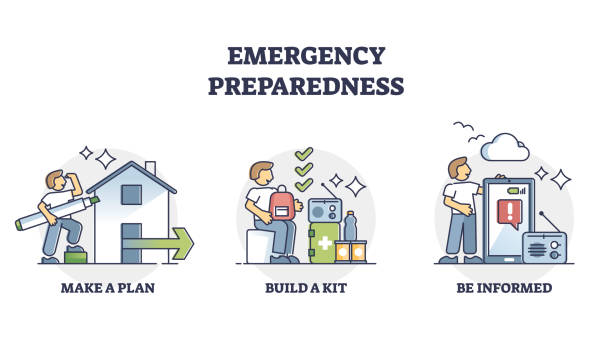When it comes to home emergencies, preparation can mean the difference between chaos and control. Two-story homes, while spacious and practical, come with unique safety concerns. From fires and power outages to medical emergencies, being ready to respond quickly is especially important in multi-level homes. Clear planning, thoughtful design, and simple upgrades can help every household member, regardless of age or ability, stay safe. Whether you live with kids, older adults, or someone with mobility challenges, taking time now to prepare your home can give you peace of mind and protect your family when it matters most.
Create a Simple, Actionable Plan
Every household should have a basic emergency plan. This includes identifying two exits per floor, choosing a safe meeting point outside, and making sure every resident understands what to do in different situations. Practice the plan a couple of times a year so it becomes second nature. If you have children, explain the plan in simple terms and turn the drill into a learning opportunity rather than a scare tactic. Keeping laminated copies of your plan in key areas like the fridge or a hallway bulletin board ensures that it’s easy to review when needed.
Prioritize Clear, Unblocked Pathways
In an emergency, seconds matter. Make sure hallways, staircases, and doorways remain clear of clutter or trip hazards. Rugs, furniture, and storage bins can become obstacles in a rush. Install nightlights in stairwells and hallways so that even in low visibility, you can navigate quickly. For upper-floor bedrooms, consider escape ladders that are easily reachable. If your home layout includes narrow or winding stairs, evaluate whether mobility-friendly alternatives may be needed to improve overall access during both emergencies and everyday life.
Plan for Limited Mobility and Physical Challenges
Accessibility should be part of every emergency strategy. For households with residents who have mobility challenges, transitioning between floors can become a serious safety risk. That’s why some homeowners choose to install wheelchair lifts, making sure every member of the family can evacuate safely and independently if needed. These lifts are especially helpful in homes where sleeping quarters or essential living spaces are located upstairs. Along with ramps and grab bars, they form part of a broader strategy to keep everyone protected during unexpected situations.
Back-Up Power and Communication Essentials
A power outage during an emergency can create confusion, especially in homes with electric doors, security systems, or medical devices. Invest in backup battery packs, flashlights, and a portable power station to keep phones charged and lighting available. A weather radio with battery or hand-crank power is also a wise addition. Make sure you store emergency contact numbers in a waterproof document along with basic medical information. If cell towers go down, even old-school walkie-talkies can be a useful way to communicate between floors or with neighbors.
Stock Emergency Kits on Every Level
A single emergency kit in the kitchen or basement won’t be enough if you are trapped upstairs or separated from the rest of your family. Prepare smaller emergency kits for each floor and store them where they’re easily accessible. Include bottled water, snacks, a flashlight, basic first-aid supplies, and personal medications. On upper levels, consider including a small fire extinguisher and a whistle to signal for help if needed. Keeping essentials within reach ensures that you’re not scrambling in the dark for what you need when every second counts.

